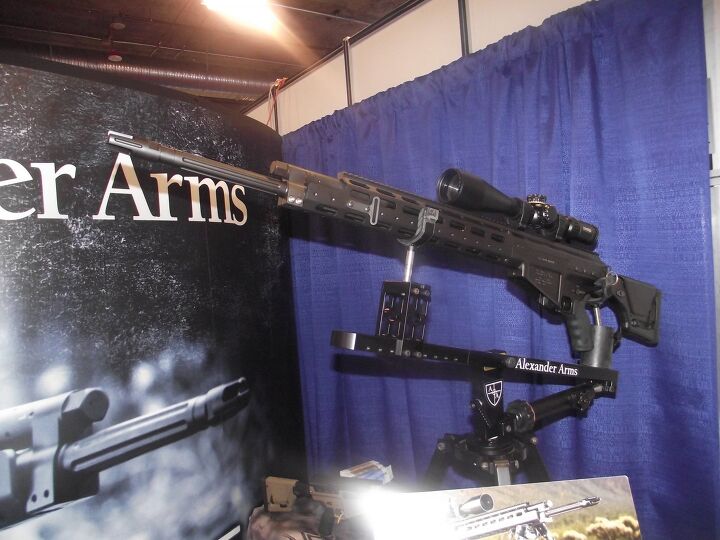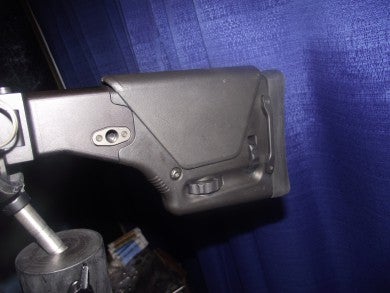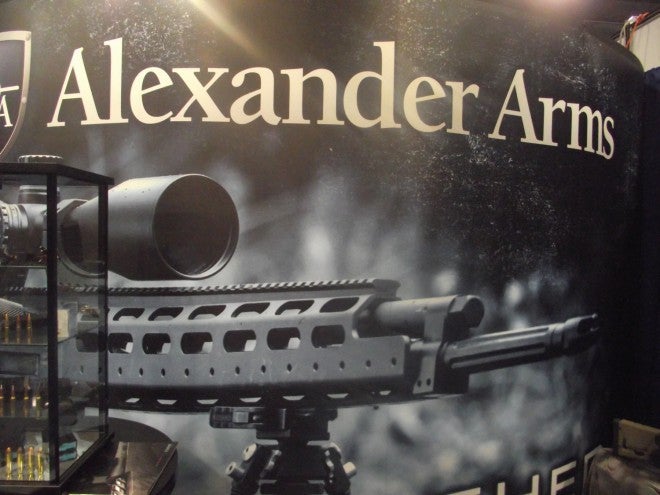When Bill Alexander left the UK he was considered one of their top armorers. And yet he left, because he wanted to see the designs and plans in his head come to fruition, and that meant a big change: a move to the United States. In 2001 Bill founded Alexander Arms which is operated from the Radford Arsenal in Southwest Virginia. The company has been growing steadily practically since the moment of its inception, and their goals are made clear on their website under the “company history” heading: “We build rifles without compromise. Every effort we make is made with the understanding that not only the operator’s life depends on it, but the freedoms that allow us to make these rifles also depend on it. We do nothing without that basic tenet in mind.” Such is the story of Alexander Arms, and that dedication shows with each rifle and every round created by Bill Alexander.

When it comes to this particular company there’s quite a bit to choose from whether it’s their .50 Beowulf, 6.5 Grendel, or one of their many firearms. But for the sake of space we’re going to focus on their Ulfberht, a rifle that just happens to be chambered in the round that’s my personal favorite: .338 Lapua Magnum. (After all, we can take a look at some of their other offerings at a later date. This is just a good starting point.)
The Ulfberht is a semi-auto .338 Lapua Magnum that was designed with care by Bill Alexander himself. This is not just another big gun. In fact, this .338 Lapua Magnum won Shooting Illustrated’s 2015 Golden Bullseye Award for Rifle of the Year. The Ulfberht was designed for simplicity with 48 individual parts and 10 moving parts. It has a gas piston operating system and was designed based on the Russian DP 28 machine gun. The gas system is adjustable which allows shooters to run their rifle in extreme temperatures. The gun itself is made with an eye for durability and longevity as well as safety; this rifle cannot be fired out of battery. An excellent example of that longevity is the fact that all the springs on this gun with the exception of the ejector spring are rated for 6 million cycles.

This is a big rifle as you’d expect from a .338 Lapua Magnum and weighs in at 19.0 pounds empty. It’s 50″ in length fully extended and 41.25″ collapsed; height is 8.5″ while width is 1.75″. It has a forged receiver made of 9310 steel alloy with a Melonite finish. The barrel is listed as 27.5″ installed with a 1:9.3-inch twist, six-groove deep Enfield pattern rifling and M18x1.5 muzzle threading. Other features include a Magpul PRS buttstock, Ergo Deluxe pistol grip and two-stage Geissele SSA trigger. The trigger has a 4.5 pound pull and is not adjustable. Magazine is a double-stack with a capacity of 10 rounds.
I was fortunate enough to spend some time talking to Bill Alexander at SHOT; even better, he walked me through the Ulfberht. According to him the felt recoil of this rifle is more along the lines of a .308 Win than a typical .338 Lapua Magnum, a detail that caught my attention. Another interesting feature is that he specifically designed the rifle to perform that way without needing a muzzle brake. Intrigued? So was I, and I’m looking forward to some trigger time with this gun in the near future.
Visit Alexander Arms’ website at www.alexanderarms.com

A word from Alexander Arms on the Ulfberht:
We have designed and produced each component to the very highest quality possible to ensure a very long life. To absorb the stresses of high pressure loads, the barrel is press-fitted into the receiver effectively providing a breach of 1.75 inches in diameter. The bolt does not rotate, but is locked into the receiver by two heavy, steel flaps. The receiver is made of steel and this was selected as the best method to support the long, heavy barrel; to resist the operating pressure in the barrel; and to lock the bolt. By combining these functions and not relying on a barrel extension and light alloy receiver, we achieved the best optimization for the strength and weight of the weapon. It is possible to build a lighter weapon at the expense of durability. It is not possible to build a lighter, stronger weapon.
 Your Privacy Choices
Your Privacy Choices
